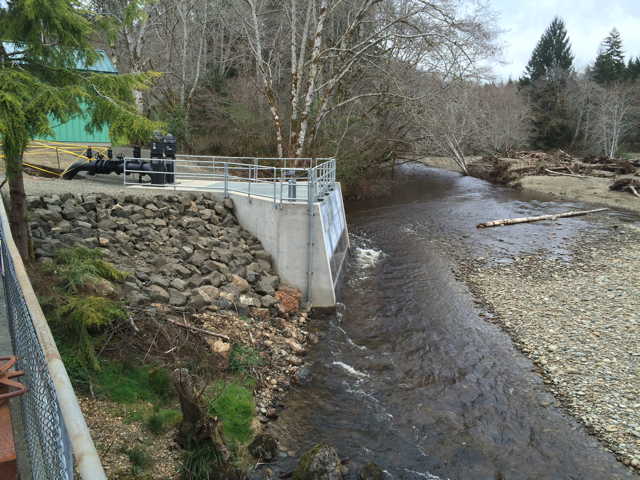Humptulips Hatchery – Stevens Creek Surface Water Intake
Department of Fish & Wildlife,
Washington
Consulting Role
- Civil Engineering
- Structural Engineering
- Mechanical Engineering
- Hydraulic Analysis
- Cost estimating
- Construction support
- Dewatering Planning
Project Members
- Jason hill, P.E.
- Eric Orton, P.E.
- Andy Blake
Project Phase
- Completed 2014
Key Elements
- Surface water intake
- NOAA Compliant
- Design with fish on station
- Environmental permitting support
- River engineering
- Active screen cleaning system
- Sediment management systems
- Pumps and pump controls
- Worker Safety
WDFW contracted HDR to design a new 20 cfs intake to supply water from Stevens Creek to assist in acclimation of smolts so that a deeper imprint could be provided to decrease straying.

The screen was designed to meet all National Marine Fisheries Service (NMFS) and WDFW guidelines. Design elements included an inclined flat-plate screen set into a reinforced concrete three-sided box covered with grating, stainless-steel profile bar, split manifold active cleaning system, and a high-pressure air system made of steel pipe.
The facility now has the ability to divert water during any time of the year with the split manifold system. Three vertical pumps were designed into the facility to deliver up to 20 cfs. An air supply system was designed to deliver air to the manifolds within less than a 5-minute recharge time. Sonic differential water surface devices were used to monitor the head difference between the outside and inside of the screen.
The controls were set according to NMFS and WDFW guidelines so that the cleaning system would run at a set time interval or would automatically clean upon a differential of 0.1-foot head difference between the front and back of the screen.
In-river grade control structures were added to stabilize the thalweg preference to the screen side of the river. Engineered log jams and habitat structures were also added to the design to control erosion and offer additional habitat.
